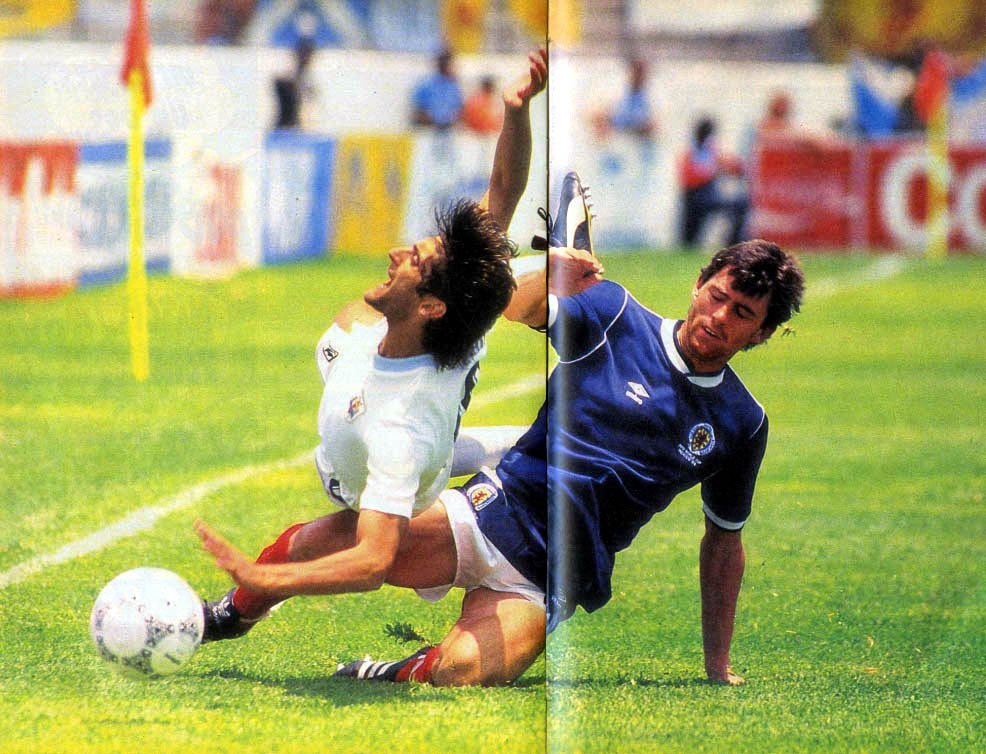Scotland are heading to the Euros for the first time since 1996, and while expectations aren’t necessarily high for the squad, their falloff from one of the most respected teams in Europe leaves fans hopeful that change is on the horizon.
Scotland is the joint oldest national football team, having partaken in what FIFA recognises as the world’s first-ever international match in 1872. Over the next forty years, Scotland competed exclusively against England, Ireland, and Wales. The games were often competitive, and they became even more so when the British Home Championship was founded, an annual football competition between the four national teams of the United Kingdom.
Most cite the Championship as the start of the ever-famous rivalry between Scotland and England, with several notable matches throughout the year causing tensions between players and fans alike. In 1878, the Scottish famously beat England 7-2, a result which was considered a national embarrassment and England’s biggest loss until 1954.
The 1967 tournament saw Scotland come up against England in a match that would decide who would be victorious in the British Home Championship. The game came mere months after the latter’s victory at the 1966 FIFA World Cup. Despite the English being the clear favourites, Scotland went on to win 3-2 (with the scoreline severely flattering England), and the Scottish supporters invaded the pitch, declaring themselves ‘World Champions’ due to the fact that they became the first team to beat England after their World Cup win.
The rivalry continued to grow, and a decade after, in 1977, the Championship once again came down to the final matchup between Scotland and England. Despite the match taking place at Wembley, the fans in the stadium were primarily Scots.
“The place was a sea of tartan,” Scottish defender Gordon McQueen recalled. “I was walking alongside Mick Mills [who played as a defender for England], and he said, ‘I can smell the whisky from here!’ There was an unbelievable atmosphere.”
McQueen scored the first goal late in the first half, with Kenny Dalglish doubling their score in the second half. England scored a late penalty, but it wasn’t enough. After the victory, the Scottish faithful once again invaded the pitch. Some were able to mount their way on top of one of the goals, leading to the crossbar to collapse.
Former Scottish forward Denis Law spoke about how adamant fans were on taking souvenirs from Wembley back home, including the broken goalposts.
“Have you ever lifted a crossbar? It is unbelievably heavy! They wanted to take the crossbar on the tube.”
Fans also decided to rip patches from the Wembley turf as mementos, with Law claiming that the turf from three penalty spots were eventually for sale on the streets of Aberdeen.
“Three! There’s only two on the pitch!”
Hundreds more anecdotes detail what the Scottish team in their first century was all about: grit, determination, talent, and the ability to win.
Outside of the rivalry against England, between 1974 and 1998, Scotland qualified for six out of a possible seven FIFA World Cup’s, and despite failing to get out of the group stage, the team have impressed throughout the tournament. Specifically in 1974, 1978, and 1982 when they only missed out on the knockout rounds due to goal difference.
However, even a hundred years of success doesn’t guarantee ongoing success. Lack of financial stability, competitiveness, and complacency led to a bitter decline in Scottish football.
Scotland’s failure to retain their accomplishment’s throughout the years is primarily due to the regressing quality of the Scottish Premiership. In the earlier years, the topflight in the Scottish league was known for its prestige. After World War II, Scottish clubs found great success both domestically and in European competitions.
Rangers, Hibernian, Aberdeen, Hearts, Dundee United, and Kilmarnock were all clubs that won league titles from the mid 40’s to the mid-’70s, but it was Celtic who specifically dominated, especially during the 1960’s and 1970’s. The Celts won their first European Cup in 1967, becoming the first British club to win the prestigious trophy. They also notably won a record nine consecutive league titles from 1966-1974.
By the late ’70s, more clubs were financially backed and were able to compete with Celtic. Aberdeen and Dundee found success in Europe, and with the Heysel Stadium disaster in 1985 causing English clubs to be banned from the European Cup Competition, several English players opted to not play in their own country, instead, coming to Scotland to have a chance to play in the European Cup. Rangers then became the dominant force in the league, winning nine consecutive titles from 1989 to 1997.
With the Old Firm Rivalry between Celtic and Rangers as strong as ever, and other clubs creating their own history, the league was thriving. Young Scottish players were being developed and phased into teams, while the highest of talents from abroad were coming into the league, and raising the overall standards.
This all came crashing down in 2012 when Rangers were forced into liquidation and relegated down to the fourth tier of Scottish football. The league seemingly lost its competitiveness overnight, with no club being able to financially compete with Celtic. In 2017, a study with 18 leagues across Europe found that Scotland had the third highest financial disparity amongst the clubs in the top flight. The study found that with Celtic’s average annual salary per player was more than double that of their closest rivals Rangers, and 17 times more than Hamilton, the lowest salary in the Scottish Premiership. And despite domestic triumphs and financial backing, Celtic were unable to translate that into accomplishing anything in Europe.
With little chance of winning trophies in Scotland, world class talent from abroad rarely made the choice to play in Scotland, instead opting to compete in England, Germany, and Spain.
One would think that this would allow Scottish players to develop in their own league, but clubs were so interested in trying to overtake Celtic that talent from overseas was often acquired to give instant results. Young Scottish players were never given the opportunity to grow and refine their talent.
As the Scottish league deteriorated, the English league only got stronger. Gone were the days where teams in England depended on Scottish talent, and were able to develop them for the national team. Instead the Premier League became a global league, with players from all over the world looking for a move there.
Eventually, Rangers made their way up from the top flight, and their new era under Steven Gerrard has proven that they can once again compete with Celtic. Whether the competitiveness will last is yet to be seen, but that combined with the rise of Scottish stars in the last few years, has given fans hope for the upcoming year.
While no one can say that the current Scottish team will reach the heights of the generations past. But there is potential in the current squad; potential that fans can only hope will make a decent showing at the upcoming Euros.
Back in 2018, Glasgow-born Andrew ‘Andy’ Robertson became the first Scottish player in 21 years to feature in a UEFA Champions League Final, starting the match at left-back for Liverpool against Real Madrid. Liverpool went on to lose 3-1, but it was only the start for Robertson.
Since that 2017/18 season, he’s become a staple in Liverpool’s side, and with four trophies won, including the 2018/19 Champions League and the 2019/20 Premier League, a first for the Merseyside club in 30 years, Robertson has made a name for himself as one of the best left-backs in world football, and he will be captaining Scotland at the Euros.
Other strong players in the squad who have played in England include Kieran Tierney, John McGinn, and Scott McTominay. Eleven of the 26 players in the team for the competition play in Scotland at a club level, including Celtic star Ryan Christie and Rangers’ Nathan Patterson, who has shown great potential as a young right-back.
Manager Steve Clarke is no Bill Shankly or Alex Ferguson, but he’s managed to find a way to make it difficult for opponents to break down his side. His 3-5-2 formation has allowed him to get the best out of his team and made room for his two best players in Robertson and Tierney, despite the both of them being left-backs.
Clarke’s side will be looking to prove that they aren’t the Scotland of old. Coming up against Croatia, Czech Republic, and England, the squad will hope that this could finally be their chance to advance to a knockout round in a major tournament. Beating England in their matchup would be the cherry on top.
Scotland aren’t a perfect team. Their tumultuous rivalry with England has primarily defined their history, and heading into these Euros, they are a team with little expectations on their shoulders, yet still, much to prove. The potential is there, but only time will tell if it’ll translate to results on the pitch.
Cover image by El Gráfico.



